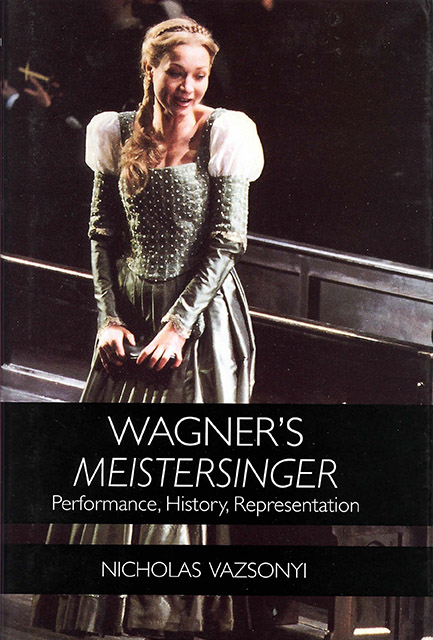3 - Richard Wagner's Cobbler Poet
Published online by Cambridge University Press: 25 March 2023
Summary
Hans Sachs in Die Meistersinger von Nürnberg may well be considered the most demanding and extensive among the roles Richard Wagner assigns the singer-actor—and not only those for baritones. According to international stage convention, the cobbler poet from Nürnberg belongs to the same voice type as Wotan, in other words that of the Heldenbariton. But when the two roles are compared with regard to vocal requirements, an essential difference soon becomes apparent.
Some singers might ascribe little significance to the slight difference in voice type that Wagner identifies in the dramatis personae, where Wotan is classified as “High Bass” and Sachs as “Bass.” Indeed, such a decision seems to be supported by the fact that in Die Meistersinger all parts written in the bass clef are characterized as “Bass.” Moreover, the vocal range of the two parts—Sachs and Wotan—are almost identical, since the former sings from A to f1 and the latter from F to f1–sharp although the deep F only appears once, parlando and pianissimo (Die Walküre, Act II).
In keeping with the totally divergent characteristics of the two roles, Wotan requires primarily a robust chest voice and, in the dramatic outbursts, fluctuates in wide accented fortissimo intervals which, as far as register is concerned, should not pose too great a problem for basses with a well-rounded chest voice and an elastic-slender high range. Thus basses with light high ends like Michael Bohnen, Georg Hann, or Paul Bender could sing Wotan successfully.
The situation is somewhat different with Sachs. He too requires aboveaverage vocal amplitude and seamless control throughout the entire vocal range. But in contrast to the imperiously irate and vivaciously quarrelsome God, the benevolent Sachs affirms life, and thus his vocal line tends to move about in the higher and brighter resonances. Wagner has placed a few contemplative passages in the lower regions, and those seldom as fully projected tones. However, when Sachs interjects himself into the story line and becomes “active,” when he grows passionate, raising his powerful voice, then he also moves vocally into a higher register, usually in the upper middle range.
In this respect, I am thinking above all of the lively exchange with Stolzing in Act III, which proceeds mostly in a fluid tempo.
- Type
- Chapter
- Information
- Wagner's MeistersingerPerformance, History, Representation, pp. 51 - 55Publisher: Boydell & BrewerPrint publication year: 2003



